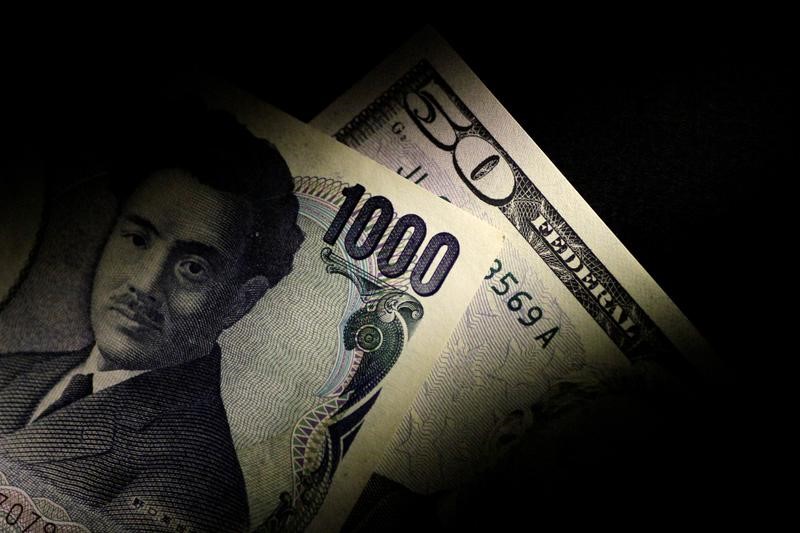Investing.com - The U.S. dollar traded in a stable fashion in Europe Tuesday, while the yen soared in the wake of suspected intervention by the government last week.
At 05:40 ET (09:40 GMT), the Dollar Index, which tracks the greenback against a basket of six other currencies, edged 0.1% higher to 104.067, bouncing from last week’s four-month low.
Dollar takes a breather
The dollar steadied Tuesday, with traders appearing to take a breather as they digest the volatile political situation with little in the way of economic data until the release of U.S. personal consumption expenditure inflation figures for June on Friday.
Vice President Kamala Harris appears on course to be the Democratic Party’s presidential nominee, but will still need to be formally nominated.
Still, Republican nominee Donald Trump was seen polling ahead of Biden and Harris as of last week, CBS and HarrisX data showed.
Expectations of a Trump presidency has resulted in some strength in the dollar, as analysts said he would be likely to enact protectionist trade policies.
The main economic data release this week will arrive on Friday, with June's personal consumption expenditures index set to test market expectations that the Federal Reserve is all but certain to cut interest rates in September.
Euro lower ahead of key activity data
In Europe, EUR/USD fell 0.2% to 1.0873, drifting lower ahead of key activity data later in the week.
While economic growth in the eurozone remains sluggish, strength in the dominant services sector, boosted by tourism, has kept price pressures uncomfortably high.
This has posed a challenge to the ECB, so PMI data on Wednesday will be closely watched after the central bank kept interest rates on hold at 3.75% last Thursday and resisted offering future guidance, saying it was "data-dependent."
Markets are pricing in almost two ECB rate cuts for the rest of the year.
GBP/USD traded 0.1% lower at 1.2919, falling back from the 1.30 level that the pair saw last week for the first time in a year.
The pound has received a boost from the political stability brought about by the Labour Party’s dominant electoral victory at the start of this month.
However, at the heart of this latest leg higher in the pound is the belief that British interest rates will take longer to decline than those elsewhere.
Many big central banks have started cutting rates, with the Bank of England and the U.S. Federal Reserve among the last still standing still.
Data earlier this month showed that UK inflation remains stubbornly high, pushing the likely starting date of the BOE’s rate-cutting cycle from August to later in the year.
Yen strengthens ahead of BOJ meeting
In Asia, USD/JPY fell 0.7% to 155.94, not far from Thursday's five-week low of 155.375, with the yen continuing to strengthen against the dollar after suspected intervention by the government last week.
A senior member of the Japanese government called for more clarity on interest rate hikes by the Bank of Japan, the Nikkei reported on Tuesday. The comments come just a week ahead of a BOJ meeting, where some analysts expect the bank to hike interest rates by 10 basis points.
USD/CNY edged higher to 7.2743, remaining close to levels last seen in November.
The currency was battered by increasing uncertainty over the Chinese economy, especially after recent data showed it grew less than expected in the second quarter.
